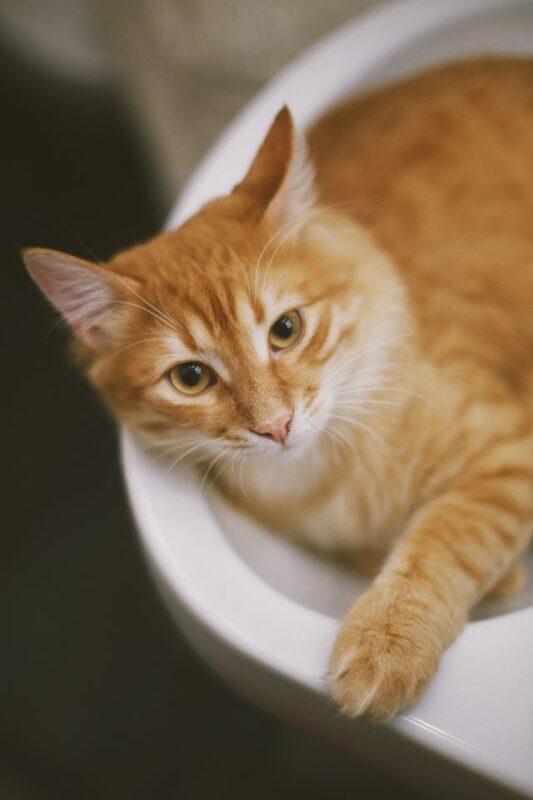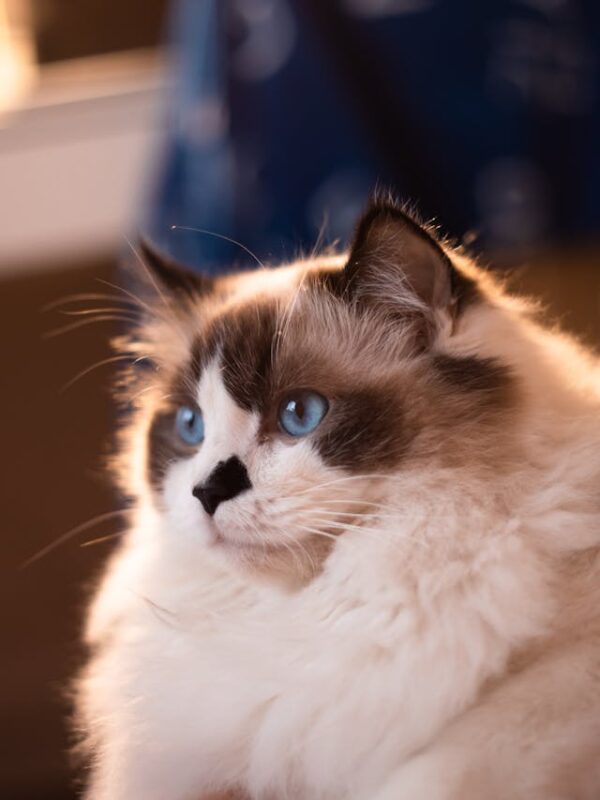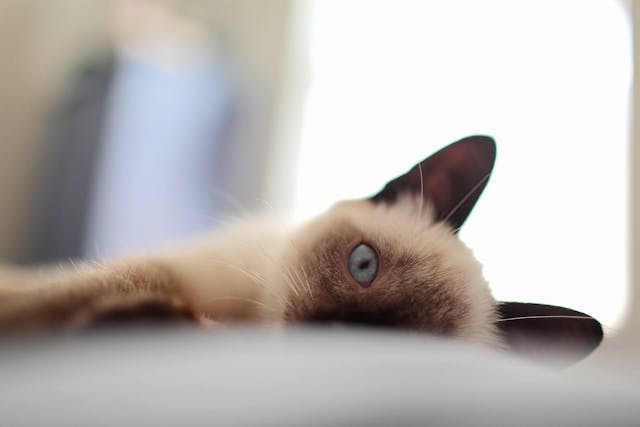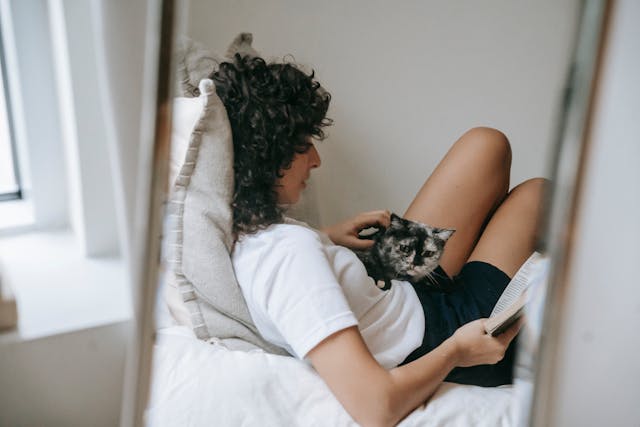Megacolon in Cats: Causes and Treatment
Posted: 06/23/2025 | BY: Jenna Bruce | Categories: Cat , Health problems , Pet care
Let’s be honest: cat poop isn’t something most of us enjoy thinking about. But if your cat hasn’t used the litter box in a couple of days, or you’ve noticed they’re straining, uncomfortable, or even avoiding the box altogether, it might be time to dig deeper (figuratively, of course). One possible explanation? Megacolon. Megacolon in cats is a serious and often misunderstood condition. But with the right care and a little patience, many cats go on to live happy, comfortable lives.
So if you’ve never heard of megacolon before, or you’re trying to figure out what it means for your cat, you’re in the right place. Let’s walk through what megacolon is, what causes it, and what you can do to help your feline friend feel better.

What Is Megacolon?
In simple terms, megacolon is when your cat’s colon (the final section of the digestive tract) becomes stretched out and loses its ability to move stool effectively. This leads to chronic constipation, and over time, if the stool stays in the colon too long, it becomes hard, dry, and even more difficult to pass.
Think of the colon like a muscular tube that squeezes waste out of the body. When it stops contracting properly, waste builds up. The more it builds up, the worse the problem gets.
If left untreated, megacolon can become life-threatening. But the good news? It’s manageable—especially when caught early.
What Causes Megacolon in Cats?
There are a few different reasons why a cat might develop megacolon. In some cases, we never know exactly what caused it. But here are the most common culprits:
1. Chronic Constipation
The most common pathway to megacolon is long-term, unresolved constipation. If a cat repeatedly struggles to pass stool, the colon can become overstretched and lose tone, making it even harder to push waste out.
2. Obstructions
Physical blockages, like hairballs, tumors, or pelvic injuries from past trauma, can prevent stool from passing. This causes stool to back up and puts pressure on the colon, sometimes leading to permanent stretching.
3. Neurological Issues
The colon is controlled by nerves and muscles. If the nerves that signal the colon to contract are damaged, due to injury or neurological disease, the colon won’t function properly.
4. Idiopathic Megacolon
In many cases (especially in younger adult cats), we simply don’t know what causes it. These are referred to as idiopathic cases. Some researchers believe there may be a genetic component in certain cats.

Signs and Symptoms of Megacolon in Cats
Cats are known for being stoic and hiding discomfort, so it’s important to keep an eye out for subtle clues. Here are some common signs that something might be wrong:
- Straining in the litter box (often mistaken for a urinary issue)
- Passing small, dry, or hard stools
- No bowel movement for days
- Abdominal discomfort or bloating
- Lethargy or hiding
- Loss of appetite
- Vomiting
- Weight loss in chronic cases
Some cats may even begin avoiding the litter box altogether because they associate it with pain. If you see any of these symptoms, it’s time to call the vet.
How Is Megacolon Diagnosed?
Your vet will start with a physical exam—often, they can feel the buildup of stool in the colon during abdominal palpation. From there, diagnostic tests like:
- X-rays – to visualize the colon and determine how much it has stretched
- Blood work – to check for dehydration, electrolyte imbalances, or underlying conditions
- Ultrasound or enema studies – to rule out blockages or abnormalities
The sooner you get a diagnosis, the better the chances of managing the condition before permanent damage is done.

Treatment Options: From Mild to More Serious
Treatment for megacolon depends on how advanced the condition is and whether it’s a one-time problem or an ongoing issue.
1. Medical Management
For cats with mild to moderate cases, medical management can often provide relief. This might include:
- Stool softeners or laxatives: These help make the stool easier to pass.
- Motility drugs: Medications like cisapride can help stimulate the muscles of the colon.
- Dietary changes: High-fiber or low-residue diets can help regulate stool consistency, depending on your cat’s specific needs.
- Hydration: Dehydration contributes to constipation, so your vet might recommend subcutaneous fluids or increased water intake.
You’ll likely need to work closely with your vet to find the right combination of meds and diet. It may take a little trial and error.
2. Manual Evacuation
If the stool is too hard or the colon too impacted, your vet may need to manually remove the feces under anesthesia. This is sometimes necessary to “reset” the colon and start fresh with a new management plan.
3. Surgery (Subtotal Colectomy)
In severe or unresponsive cases, surgery may be the best option. A subtotal colectomy involves removing most of the colon. It might sound drastic, but many cats do very well post-op and can enjoy a normal quality of life with softer, more frequent stools.

Long-Term Management: Helping Your Cat Live Comfortably
Managing megacolon is all about being proactive. It’s not a “one-and-done” situation. Your cat will likely need ongoing care and attention to prevent flare-ups.
Here are a few helpful tips:
- Monitor litter box habits closely—go days without a poop? Call your vet.
- Stick to your cat’s medication and diet plan religiously.
- Keep your cat well-hydrated with a pet water fountain, wet food, or added broth.
- Encourage activity, which helps stimulate digestion.
- Use regular vet check-ups to track your cat’s progress and make adjustments if needed.
And above all, be patient. Cats with megacolon can still lead happy lives when their condition is managed properly. With the right routine, you’ll both settle into a rhythm.
Why Pet Insurance Makes a Big Difference
Megacolon can be expensive to manage. Between diagnostic imaging, medications, prescription diets, vet visits, and possible surgery, the costs can add up quickly.
That’s why pet insurance can be a financial lifesaver.
Many pet insurance plans help cover:
- Diagnostic testing like x-rays and bloodwork
- Prescription medications
- Manual fecal evacuations
- Specialist referrals
- Surgery like subtotal colectomy
- Follow-up care and hospitalizations
Having insurance in place gives you peace of mind, so if your cat does develop megacolon (or anything else), you won’t have to choose between your wallet and their well-being.
Thinking about pet insurance? Now’s the perfect time to explore your options. Give your cat the coverage they deserve and get the peace of mind you need.
Find & Compare the Top Pet Insurance Companies
Get Quotes for Your Cat
References:
- https://vcahospitals.com/know-your-pet/megacolon-in-cats
- https://www.petmd.com/cat/conditions/digestive/c_ct_megacolon
- https://www.dvm360.com/view/feline-megacolon-hard-facts-proceedings
Disclaimer
The information contained on this blog is intended for informational and educational purposes only and should not be construed as medical advice. It is not a substitute for professional veterinary care. Always consult with your veterinarian before making any changes to your pet's health care or treatment plan.
The authors of this blog are not veterinarians and do not claim to be experts in pet health. The information provided here is based on our own experiences and research, as well as information from reputable sources. However, we cannot guarantee the accuracy or completeness of this information.
We encourage you to do your own research and consult with your veterinarian before making any decisions about your pet's health.
Previous post
Hypothyroidism in Dogs: Symptoms, Causes, TreatmentNext post
Fireworks Calming Tricks for DogsCompare top pet insurance providers plans.
Enter your dog’s age in years and months to calculate their age equivalent to human years.
Calculate your dog’s ageEnter your cat’s age in years and months to calculate their age equivalent to human years.
Calculate your cat’s age